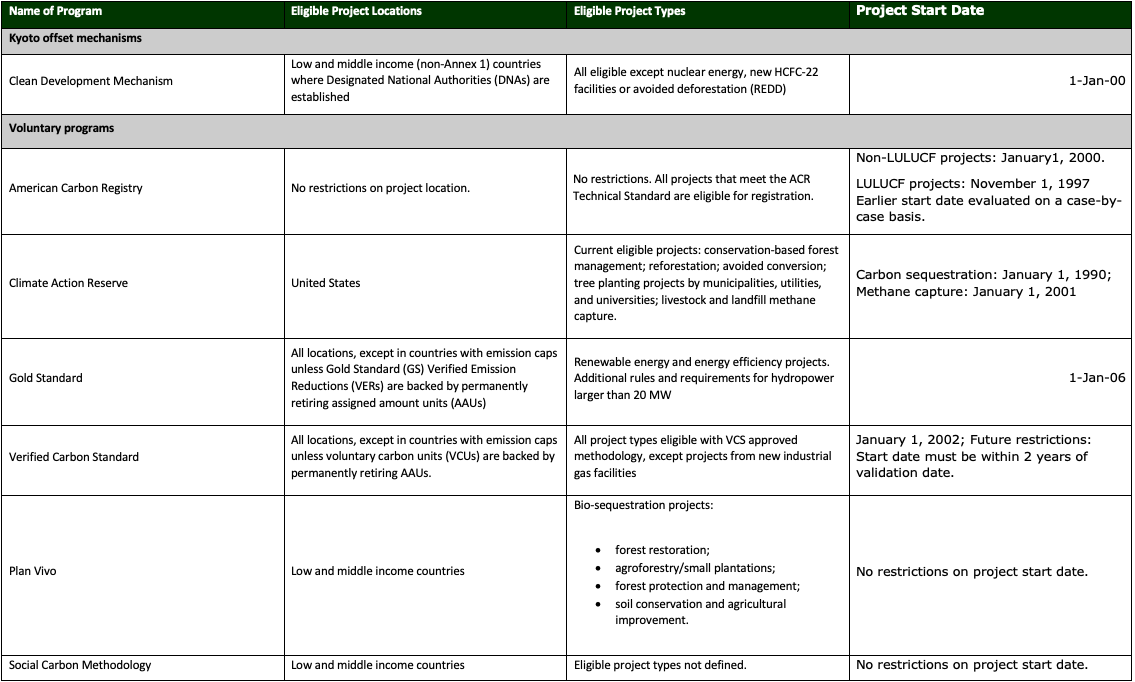
The table above shows offset eligibility requirements for each offset system or program. These requirements reflect the specific context and objectives of each system and usually include the geographic region and the project types. Some offset programs and standards also include environmental and social objectives – commonly referred to as co-benefits or secondary benefits — as project eligibility criteria.
In general, offset programs tend to focus on either encouraging regional investment in high-income nations or supporting sustainable development and providing financial flows to developing economies. While sustainable development and technology transfer to low and middle-income countries was an explicit design goal of the CDM and the Kyoto Protocol, many of the regional and provincial mandatory compliance programs outside the Kyoto Protocol have limited projects to those located within their own jurisdiction or region to maintain benefits and build support for carbon pricing policies through investment in local or regional communities and enterprises.
Project Location
The table above shows the eligible project locations but not the distribution of offset project activities to date under each program. The distribution of project locations and project types reflects not only where market opportunities lie (e.g., the supply of low-cost emission reductions), but also the capacity of national and local institutions to engage in the offset market, as well as the transaction costs and other barriers they may face.
Project Type
In general, offset programs have developed two different approaches to determining project-type eligibility. Some programs, such as the CDM, define which project types are NOT eligible (e.g., nuclear and avoided deforestation) and then use a bottom-up approach for approving methodologies for new project types: a project developer can submit a new methodology for a new project type to the UNFCCC. This methodology is then evaluated by the CDM Methodology Panel which makes recommendations to the CDM Executive Board which will either approve or reject the new methodology. Other programs, such as CAR, use a top-down approach: the program body selects the list of eligible project activities and develops the methodology for each of those project types.
Project Start Date
The project start dates listed in the table above refer to the cut-off date for project commencement. In principle, a project type that has begun prior to the start date would be considered ineligible, although precise definitions of commencement vary among programs. The typical rationale for setting a start date is to help to ensure that revenue from offsets generated actually contribute to plans to implement the project, that is, that they would not have happened anyway and are additional. Therefore, the project start date is generally linked to the timing of the launch of the overall offset program.
